#heavily digitally manipulated photo
Explore tagged Tumblr posts
Text
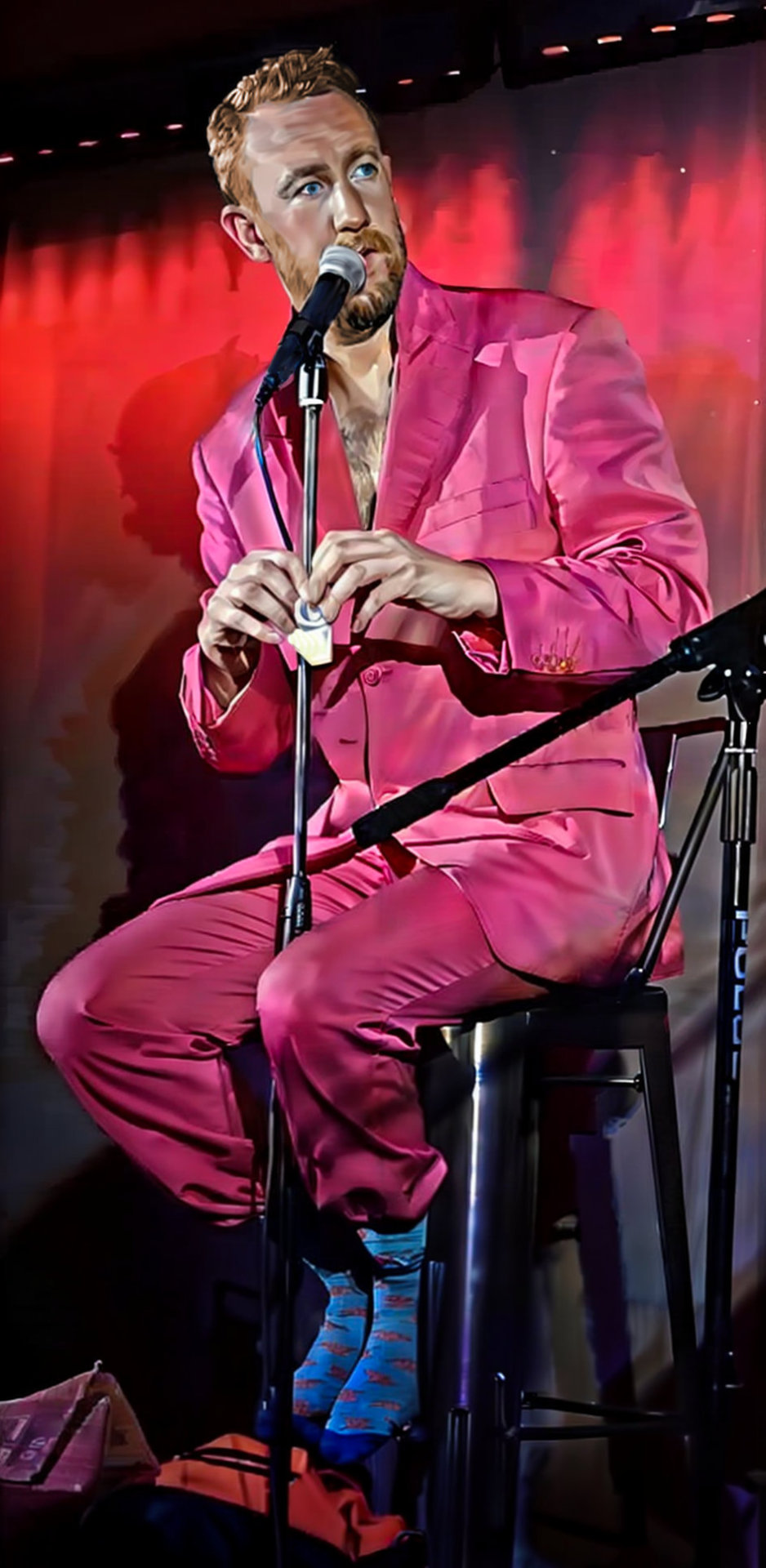
No idea what's happening here... but I had to make this picture better.
#Alex Horne#Little Alex Horne#Really Big Alex Horne#Very pink Alex Horne#Pink suit#The Horne Section#heavily digitally manipulated photo#his socks rock#I love colours
17 notes
·
View notes
Text
The current state of AI discourse is baffling to me because I swear to god some people are just developing collective amnesia and dismissing AI art as "not actually being that bad" when the problems with it are significantly deeper than whether or not it's "real art". It being "real art" is irrelevant to it causing tangible harm. Like yeah I don't think someone AI generating an image to use as a reference is some massive evil, but in the greater scheme of things:
AI art is being used to spread actual real-world misinformation. Propaganda.
Ai art is being used to spread CSEM and other forms of revenge porn. It is also threatening the livelihoods of sex workers to some degree.
People are putting their favorite artists' works through a blender, without their consent, instead of paying them, because image generation is instant dopamine.
Big corps are trying to use AI instead of paying artists/writers because they're greedy fucks.
Most AI programs (with few exceptions) are scraping from existing works without the consent of the original artists.
AI voices are doing the same.
A common argument I've seen is comparing these things to like... digital art, photo editing*, voice splicing. You have to understand that the merit of these things isn't that "they take more time/effort". Effort is not an inherent facet of art. Plenty of tools exist to make art easier that we take for granted now-- many forget the discourse that kicked up when digital art was first gaining popularity. The issue is and always will be consent. Most artists do not want their works or voices to be put into AI databanks. The fact that most AI programs do not care for this, and that a lot of companies are trying to swindle their way into getting artist consent under the pretense of "well they didn't say no", is the main issue. We completely lost the plot when we started focusing more on "is AI art real art?" and "is it bad to use AI for any purpose?", because those are both irrelevant to the question of "is AI harmful?", wherein the answer is yes. This is also failing to consider that "real art" can also cause harm for similar reasons: sexual harassment/revenge porn, defamation, propaganda, etc.
*As a note, this is also ignoring the fact that a lot of people DON'T want their art to be edited or even heavily referenced. It's been commonplace in art usage terms for ages now. This is important to note in the context of AI discourse and copyright law. I also believe there is a difference between voice splicing and AI voices since splicing is more limited and way less likely to get someone actually defamed or 'replaced' as a voice actor, and is just a manipulation of existing voice clips mostly for silly shitposts.
AI CAN be helpful. AI can be used to create references, or make smoother rendering, or even just for fun. A lot of people used AI programs in their baby stages without thinking about how the images were generated or the actual consent of the artists involved, because it was a fun shiny new toy. I also like to think most people who have the means to pay an artist ultimately would. But the issue is not and never has been AI making art easier, or people using it for silly shit, or even people using it for serious art refs. The issue is AI mass-scraping existing artwork, being used to facilitate misinformation, and screwing artists out of jobs. Don't even get me started on AI fucking generating CSEM, or revenge porn, and additionally how it impacts the careers of sex workers.
AI is an issue in its current state. Yes, the panic about it taking over art as a whole was overblown, even if the fears were valid. The capacities of AI art is almost always slightly below the capacities of human-made art, and it's something that will quickly fall in popularity once it stops being the shiny new thing. People using AI to make art easier aren't the enemy either, especially since this can be beneficial for people who do it as a job-- shortening the labor time and all. That doesn't mean AI isn't an issue and that everyone critiquing it is actually just an elitist ableist cuck or whatever. None of this really would've been a problem if not for the mass scraping, resulting in both violations of artist consent, and also it picking up genuinely illegal/nasty content. That's what we should be focusing on. None of this "real art" bullshit.
All that said: I personally would say that using most AI programs-- no matter the purpose-- is unethical because of how most of them function. The only exceptions would be for programs that specifically use consensually obtained data. On this front, I would highly recommend keeping tabs on Adobe Firefly, since it's one of the very very few models out there that has stated a clear commitment to not violating the copyright and consent of artists or persons (it operates off of stock footage and public domain).
#this is a little all over the place so sorry lmao#but seeing the discussion shift on AI has been fucking BIZARRE to say the least#like. collective amnesia bizarre.#ai art discourse#ai discourse#anti ai#tw csem
64 notes
·
View notes
Text
Blog Post Week 11: Due 11/7
How do news media narrate Black individuals as criminals?
It's disturbing to consider how media narratives often shape and control the lives of Black individuals, especially when it comes to portraying them in negative ways. A whole story is often created and broadcasted nationwide, influencing how they are viewed by society. As Professor Lee points out, there are numerous examples of how the media manipulates images and information to create a specific narrative. For instance, in the case of in the case of Trayvon Martin, the news media searched his Facebook account and circulated a photo of Martin glaring into the camera, wearing a baseball cap, and sticking up his middle finger, which blocks the bottom half of his face. However, the Martin family circulated a photo of Martin smiling without a hat or anything else blocking his face. In both cases, the photo circulated by the news was used to characterize both Brown and Martin as trouble-makers needing to be surveilled or “patrolled”, and in many ways justifying the violence and murder of Brown and Martin (Lee, 2017). The media’s selective use of imagery and language serves to criminalize Black individuals, framing them as "other" and justifying harmful actions like police violence. By consistently highlighting certain negative aspects of their identities, the news media play a crucial role in maintaining the societal narrative that Black people are more likely to be involved in criminal activity, even when there is little to no evidence to support such claims.
What is genealogy and how does it correspond to Black Twitter?
Genealogy is used to highlight moments that might seem unrelated to larger social or political events but in contrast, they are deeply connected. For example, the study of the viral hashtags within Black Twitter can be considered a genealogical work because it investigates how these online expressions are connected to deeper histories and social contexts. In this way, genealogy offers insights into specific moments that need public awareness. Therefore, the analysis of black Twitter includes 24-h snapshots of the most retweeted hashtags, along with heavily circulated memes, photo statements, and videos (Lee, 2017 ).
In what ways does hacktivism challenge traditional protest methods?
Hacktivism challenges traditional protest methods by utilizing digital platforms to mobilize and organize without the need for physical gatherings. It allows activists to bypass traditional media and government control, creating decentralized and anonymous forms of resistance. Additionally, hacktivism can disrupt systems of power through cyberattacks, like website defacements or data leaks, which are harder to suppress or control than street protests.
Why is Animal Crossing being considered controversial?
Animal Crossing is being considered controversial because, despite its seemingly innocent, relaxing gameplay, it introduces players to a world where they take on debt without clear consequences. The game's mechanics, such as paying off loans and engaging in a supply-and-demand economy, mirror capitalist systems, subtly teaching players about consumerism and the pressure of financial obligations.
Lee, L. (2017). Black twitter: A response to bias in mainstream media. Social Sciences, 6(1), 26. https://doi.org/10.3390/socsci6010026
Vegh, Sandor. Cyberactivism: Online Activism in Theory and Practice
Bogost, I. (2020, April 15). The quiet revolution of Animal Crossing. The Atlantic.
3 notes
·
View notes
Text

Meta Man M & Elec Man Unhearted
Okay. Let me explain. I'm back at my Mega Man Creepypasta bullshit. Yeah, I used to be REALLY into Mega Man Creepypasta, also known as Robotpasta.
First I made Meta Man M, from "Meta Man M: Passcode of Horror". Since, it's a rough story. But I'm fond of. I like this genocidal X-Clone. I had my headcanons for him, and this year I'm actually taking the character seriously. (Also, he's the main inspiration of the new soldier character that I made)
And Elec Man Unhearted, there's some Elec lore for you. He's the Creepypasta that I made on 2014, then remade it in 2016. And that he's (heavily) inspired by the Yellow Devil creepypasta, but his story is also his own thing. Apart of using his electric abilities, his a robot ghost. He has ghost abilities like disappearing and reappearing, he also can manipulate roses to trap his victims, human and robot. And he rips people's hearts out and turn those into roses. But a special detail is his personality. He feels guilty when he kills his victims. He just wants to rest in peace, to be alone and people don't know his existence.
His original story is now 9 years old, and his remade story is 7 years old. I'm planning to make a new digital drawing for him since... While his story didn't aged well, I'm still fond of my emo electric robot ghost. His drawing is not part of that planned drawing, though.
I like how this drawing ended up looking.
Note! I'm experimenting in editing my drawings to be more clear to see, since the photos, sometimes weather and lighting can make the photo look weird. So I'm trying to edit. Please give me feedback on how I edited.
The Unedited Photo
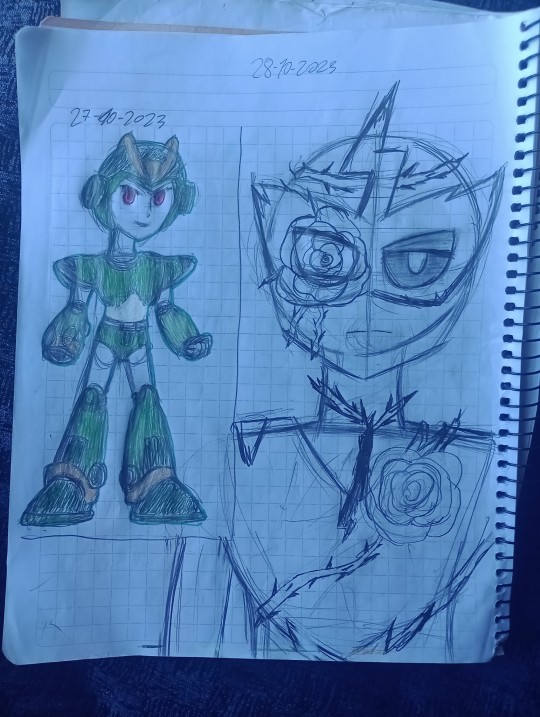
Hope you like it?
_Elec
== Feel free to support me with a donation in Ko-Fi! ==
#traditional art#Creepypasta#Robotpasta#Mega Man#I hope the Mega Man fans don't react badly at this weird-ass drawing#elecalice works
9 notes
·
View notes
Text
The Art Behind Ecommerce Photo Retouching Services
Maria Sultana
In the fast-paced world of e-commerce, where the competition is fierce and first impressions matter more than ever, high-quality images can make or break a sale. This is where the art of photo retouching services steps in, playing a pivotal role in enhancing product images to captivate potential customers and drive conversions. In this article, we delve into the significance and intricacies of e-commerce photo retouching services.
The Importance of Visual Appeal
In the digital realm, consumers rely heavily on visual cues to make purchasing decisions. When shopping online, they cannot touch, feel, or examine products physically. Instead, they rely on product images to gauge quality, appearance, and suitability. Therefore, the visual appeal of these images directly influences consumer perceptions and purchase intent.
E-commerce platforms are saturated with thousands of products vying for attention. Amidst this sea of options, businesses need to stand out by presenting their products in the best possible light. This is where photo retouching services come into play, offering a means to enhance images, remove imperfections, and create visually compelling content that resonates with the target audience.
The Role of Photo Retouching in E-commerce
E-commerce photo retouching involves a range of techniques aimed at improving the visual appeal and quality of product images. From basic adjustments like color correction and exposure balancing to more advanced enhancements such as background removal, object manipulation, and texture refinement, photo retouching services cover a spectrum of tasks designed to elevate the overall aesthetic of product imagery.
One of the primary objectives of photo retouching in e-commerce is to showcase products in their best possible light without misrepresenting them. This involves striking a balance between enhancing the appearance of products and maintaining their authenticity. Retouchers must possess a keen eye for detail and an understanding of brand aesthetics to ensure that the final images align with the brand's identity and messaging.
Common Techniques in E-commerce Photo Retouching
Several techniques are commonly employed in e-commerce photo retouching to optimize product images for online platforms:
Background Removal: Removing the background from product images creates a clean, distraction-free backdrop that highlights the product itself. This technique is particularly useful for e-commerce platforms where consistency in presentation is crucial.
Color Correction: Adjusting colors to ensure accuracy and consistency across product images is essential for maintaining brand integrity. Color correction helps eliminate discrepancies caused by lighting conditions or camera settings, presenting products in their truest form.
Image Cropping and Resizing: Proper cropping and resizing of images are essential for maintaining visual coherence and optimizing them for different viewing platforms and device sizes.
Skin Retouching (for fashion and beauty products): In industries such as fashion and beauty, where models showcase products, skin retouching is often used to achieve a flawless, polished look while maintaining a natural appearance.
Object Removal or Addition: Sometimes, unwanted objects may appear in product images, detracting from the focus. Retouching services can remove such distractions or add elements to enhance the composition or context.
Conclusion
In the competitive landscape of e-commerce, where consumers are inundated with choices, the significance of high-quality product imagery cannot be overstated. E-commerce photo retouching services play a vital role in elevating the visual appeal of product images, thereby influencing consumer perceptions and purchase decisions.
By employing a combination of advanced retouching techniques, businesses can create visually stunning product imagery that not only captures attention but also instills confidence in potential buyers. In an era where the digital shopping experience reigns supreme, investing in professional photo retouching services is a strategic imperative for e-commerce success.
2 notes
·
View notes
Text
Clipping Path: An Essential Tool for E-Commerce Photo Editing Services
Images play a crucial role in today's digital world, especially in industries such as E-commerce Image Editing Services, advertising, and graphic design. In the world of visual content, the quality and presentation of images can make or break a business's online presence. That's where image editing techniques come into play, and one of the fundamental tools used by proficient content writers and graphic designers is the clipping path.

A clipping path, in simple terms, is a technique used to remove the background of an image or isolate a specific object from its surroundings. It involves creating a vector path around the object's edges using specialized software like Adobe Photoshop. This path then acts as a mask, allowing the designated object to be placed on any background or integrated seamlessly into various designs.
Importance in Image Editing
Clipping path is a crucial aspect of image editing as it provides precision and flexibility in handling images. It enables content writers and designers to manipulate images, remove unwanted elements, and enhance the overall visual appeal, making it an indispensable tool for creating compelling content.
Types of Clipping Paths
Basic Clipping Path
The basic clipping path service is the foundation of all clipping paths. It involves creating a simple outline around an object with straight edges, making it ideal for objects with simple shapes like books, smartphones, or boxes.
Compound Clipping Path
The compound clipping path comes into play when an object has multiple holes or embedded transparency. This type of path requires more intricate techniques to ensure a seamless background removal services, commonly used for jewelry or complex product images.
Complex Clipping Path
The complex clipping path is the most intricate form and is used for objects with intricate shapes or multiple edges. Examples include furry animals, intricate clothing, or detailed machinery.
How Clipping Path Works
Tools and Software
To execute a clipping path, you need software equipped with suitable tools, and Adobe Photoshop stands out as the industry standard. The Pen Tool, in particular, plays a vital role in creating precise paths.
Step-by-Step Process
1. Open the image in Adobe Photoshop.
2. Select the Pen Tool and carefully trace the object's outline.
3. Create a path around the object, ensuring smooth curves and accurate edges.
4. Once the path is complete, apply the clipping path to isolate the object.
Advantages of Clipping Path Services
Photo Retouching
Clipping path services allow for easy photo retouching, enabling writers and designers to enhance the appearance of products or models by removing imperfections.
Background Removal
By removing the background using clipping paths, content writers can place objects on various backgrounds, creating a consistent and visually appealing look.
Creating Unique Image Effects
Clipping path services enable designers to apply various effects and filters to isolated objects, enhancing their visual impact.
Industries Using Clipping Path
Ecommerce Photo Editing Services
E-commerce Photo Editing Services websites heavily rely on clipping path services to present their products with clean and professional images.
Advertising and Marketing
In the advertising and marketing industry, Best Clipping Path Services are employed to create eye-catching visuals for promotional materials.
Graphic Design
Graphic designers use clipping paths to compose stunning layouts and designs, combining different elements seamlessly.
Photography
Photographers utilize clipping path techniques to improve their images and create unique effects during post-processing.
Choosing the Right Clipping Path Service Provider
Experience and Expertise
Look for service providers with a proven track record and expertise in handling various types of clipping paths.
Turnaround Time
Consider the turnaround time offered by the service provider to meet your project deadlines.
Pricing
Compare prices from different providers to find the right balance between quality and affordability.
Customer Reviews
Read customer reviews and testimonials to gauge the service provider's reliability and customer satisfaction.
Tips for DIY Clipping Path
Using Adobe Photoshop
Familiarize yourself with Adobe Photoshop and its Pen Tool to master the art of creating clipping paths.
Pen Tool Mastery
Practice using the Pen Tool to achieve smooth curves and accurate paths.
Refining Edges
Pay attention to refining edges to ensure the isolated object blends naturally with its new background.
Avoiding Common Mistakes in Clipping Path
Rushing the Process
Take your time to create precise paths and ensure high-quality results.
Ignoring Fine Details
Pay attention to small details, as they can make a significant difference in the final output.
Overdoing or Underdoing the Path
Maintain a balance between removing unnecessary elements and preserving essential details.
Future Trends in Clipping Path
AI and Machine Learning in Image Editing
The integration of AI and machine learning algorithms will revolutionize the image editing process, making clipping paths even more efficient and accurate.
Interactive Image Backgrounds
In the future, interactive image backgrounds may become a trend, enabling users to customize the visual environment of products.
Conclusion
Clipping path is an indispensable tool for content writers, designers, and photographers alike. Its ability to isolate objects, remove backgrounds, and create stunning visuals makes it a must-have in the world of image editing. Whether you opt for How to outsource clipping path service or decide to master the technique yourself, the impact of this tool on visual content creation cannot be overstated.
2 notes
·
View notes
Text
Taking pictures of ghosts: Polaroids, instant photography, and paranormal investigation
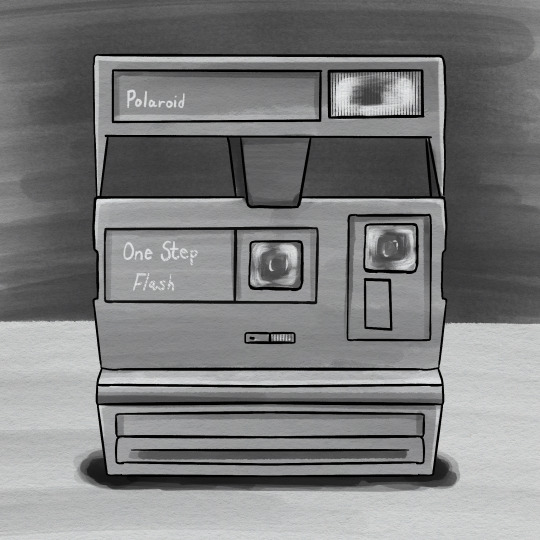
Spirit photography has a long and troubled history. When the subject comes up, my first thought is of hoaxers like William H. Mumler and William Hope, whose photographs were debunked in the 19th and 20th centuries, respectively. Much of the early belief in spirit photography seemed to rely on people not understanding the new technology of photography. Back then, people didn't know about how easy it was to doctor photos and shoot double exposures. (See also: the endearingly fake Cottingley fairy photos.)
Nowadays, we know how easy it is to Photoshop an image; we understand that photographs can be deceptive. How can you trust a digital photo that you know can be easily modified? Also, in an age when people are heavily filtering images that they post online, and maybe even making cosmetic changes to own their appearance and photographs, we have been trained not to trust pictures. We know that's trivially easy to fake things in digital photographs.
So it makes sense that instant photography has become increasingly popular when trying to photograph ghosts. After all, where's the room for fakery when an image is immediately output in a physical form?
Well, it turns out there are multiple ways to manipulate instant photos, and there are plenty of reasons to be skeptical of them as paranormal evidence, which I'll go into below.
There are people who I respect who have a lot of faith in instant photography, so I'm not ready to dismiss it as evidence of the paranormal. I'm always ready to be convinced that I'm wrong, so it's very possible that in the future I might come across a compelling reason to trust instant photography as a reliable ghost hunting tool. Personally, I absolutely believe that spirit photography is possible (with both film and digital cameras). It just isn't very probable, and it's easy to fake, so my first thought is always that an image probably isn't real.
I'm not really interested in debunking or casting doubt on the use of instant photography in paranormal investigation (though I think it's helpful to know any tool's limitations). However, if instant photography is vulnerable to manipulation, and that fact is well known and accessible via a simple online search, then why would such an unreliable medium be so trusted in ghost hunting?
At least part of that answer is nostalgia. Whether instant cameras are reliable for ghost hunting or not, it's obvious that they're popular. I've seen so many aesthetic images of ghost hunting kits that include Polaroid cameras. And even knowing what I now know about Polaroid manipulations, I understand the impulse to trust an instant photo over a digital one. It just feels more real.
The unreality of digital photography
It's incredible that digital photography is so accessible now. But the fact that we carry around smartphones that are capable of taking great pictures can make those images feel cheap, ordinary, and somewhat... unreal.
Unless you pay for a cloud service that backs up your photos as you take them, you could lose all of your recent shots if you lose your phone. Or you could be like me: I had an external hard drive fail and lost several years worth of photographs in an instant. There's something chilling and alienating about a part of the visual history of your life being wiped out. Those lost photographs (most of my pictures from 2012/2013 until about 2017) still upset and haunt me. So I think I have a particular ambivalence for digital photos; in the back of my head, I always feel like they could all disappear in an instant.
But whether or not you've ever lost your phone or had a hard drive crash, there is something ghostly and untrustworthy about digital pictures. At their core, they are insubstantial, simple to modify, and easily lost.
Instant photography's allure
Maybe this is my own nostalgia talking, but there's always been a certain appeal to instant photography. There're incredibly immediate and physical. You take the photograph, the camera spits out a packet of glossy paper and chemicals, and in ten minutes or so, it's been developed into a picture.
In the interest of full disclosure: I don't consider myself a photography expert by any means. (I barely count as a competent amateur.) But I have been using a Fujifilm Instax Mini 8 camera for about eight years, and a Polaroid Now I-Type camera for the last two years, so I have a decent amount of experience using two types of instant cameras. (Based on what I've seen online, the Fujifilm Instax line seems to be more popular than the more expensive and—in my limited experience, at least—more glitchy Polaroid Now line.)
Even in the age of digital photography, and despite their limitations, I'm always amazed by instant photos because they're physical products that I get to hold in my hand. They aren't digital detritus like the photos that pile up on our phones. They feel real. They are real.
Polaroids and ghost hunting
All that being said, instant photographs are more easily manipulated than you might think (check out this 2008 forum thread, where commenters offer some possible debunkings of ghostly Polaroids).
While I was researching this, I found a list of fifteen reasons why Polaroids are making a comeback, and was surprised to find that reason number seven was that Polaroid photos are "Easy to Manipulate." According to the article, which was published on thephotographyprofessor.com:
If you are still interested in doing some post-production type editing on your photos, you are in luck. There are all kinds of techniques you can use to manipulate your pictures, and some of them can be really unique. This is just one more benefit of using Polaroids for artsier photos. One of the techniques you can use to customize your photos is pushing around the chemicals underneath the photo paper before they have fully developed. When the image appears on the paper, the fixer is still working so the chemicals can be moved around with a cotton swab or a pencil. This can create some incredibly unique effects. Another technique you can use is exposing the photo to more light before the fixer has finished working. By shining a flashlight or other light source onto the image, you will double expose the film and create elements that would not have otherwise been in the picture.
There's even a Wikipedia page detailing ways to manipulate Polaroids. (Though it does note that newer Polaroid film is more difficult to manipulate than the older film types, which are no longer being manufactured.)
I also found an interview with a photographer on uniquephoto.com that went into detail about ways to manipulate Polaroids:
Polaroid Manipulation is quite simply manipulating the Polaroid print. After the print comes out of the camera, you have some time as it develops when the emulsion and the developer paste underneath are soft and manipulable. You can use a simple tool like a regular dried-up ballpoint pen and push the emulsion around, break it up, or push right down through the image to the black backing. Heating or cooling the print as it develops can affect it, too.
But, still, if you watch someone take an instant photograph and then look at that physical picture, it feels like fakery is impossible. There isn't a computer or smartphone in between the photographer and the final image. It's all done by an analog machine with a single purpose: to capture a visual record of what it's pointed at.
Even before I learned about Polaroid manipulation, I had a lot of skepticism about using Polaroids in paranormal investigations. My Polaroid camera is always introducing strange artifacts into photographs that I am very sure are not paranormal-related, so I wouldn't necessarily trust my Polaroid to show me something paranormal--unless I saw an anomaly that didn't resemble its usual misprints. (Though I suppose it's worth noting that it's always possible that I got a lemon.)
I'm not convinced that there's a valid technical reason to trust instant photos over digital ones. It seems like if a ghost can be captured by an analog camera, it can be captured by a digital one.
The only justification I can think of is just a general tendency to trust analog devices more when it comes to ghost hunting. And that's what I'm trying to suss out right now: is there a real reason to believe that analog devices are better for paranormal investigation? Or is something else (nostalgia? alienation and mistrust of tech?) motivating the tendency to trust retro devices over contemporary ones?
There's a lot more to be said about spirit photography, and maybe that's something for another day. But I want to dig deeper into why Polaroids and instant photography in general are so popular in the paranormal and beyond—which I'll do in an upcoming post.
#cryptidcore#cryptidacademi a#ghost hunting#ghosts#paranormalinvestigator#paranormal podcast#nostalgia#90s nostalgia#80s nostalgia#polaroid#analog photography#instant photography#instax#film photography
3 notes
·
View notes
Text
Mastering the Digital Canvas: The Magic of PTool's Face Swap Feature
Have you ever wondered what the world would look like if you could Swap Faces with someone—or anyone? It's not just a whimsical thought; it's a creative reality made possible by tools like PTool's AI Face Swap. This nifty online free tool has taken the internet by storm, letting users explore new dimensions of self-expression through the simple act of swapping faces in photos. Let's explore into how this feature revolutionizes the way we approach creative composition.

Imagine you're scrolling through your photo library and come across an old picture of you with friends. What if you could swap your face with a celebrity, a historical figure, or even an animated character? PTool's Swap Face feature makes this possible with a few clicks. It's like having a magic wand that changes your image into a piece of art that's limited only by your imagination.
But how does it work? PTool uses sophisticated AI algorithms to analyze facial features and map them onto another person's face. The result? A seamless transition that can fool even the most identifying eye. This technology raises the question: where do we draw the line between fun and privacy? It's a valid concern, and it's important to respect the usage rights of any image you choose to manipulate.
So, what's the process like? First, you select the photo you want to edit. Then, you choose the target photo with the face you wish to swap with. PTool does the rest, line uping the features, adjusting the lighting, and ensuring the swap looks natural. It's fascinating to see how the tool captures the nuances of expression, making each face swap a unique work of art.
Now, let's talk about the NSFW mode. Yes, PTool offers an "anything goes" approach for users who want to experiment further. But here's where ethical considerations come into play. While it can be tempting to Swap Faces with anyone and everyone, it's crucial to use this feature responsibly. We must ask ourselves: is this appropriate? Is it respectful? The answer should always be yes.
The beauty of PTool's Face Swap isn't just in the technical aspect. It's about the doors it opens for creativity. Imagine a world where art is not constrained by physical appearance. Writers might use face swaps to visualize their characters more vividly, or photographers could experiment with new forms of portraiture. The potential applications are endless, and they all start with the simple act of swapping faces.
But it's not without its challenges. The accuracy of PTool's AI Face Swap depends heavily on the quality of the images you provide. A high-resolution photo will yield better results than a pixelated one. And while PTool does a commendable job, it's not perfect. Sometimes the swapped faces may not line up perfectly, reminding us that technology, no matter how advanced, is still a work in progress.
What about the learning curve? Is it easy to use PTool's Face Swap for someone who isn't tech-savvy? The answer is a resounding yes. The interface is user-friendly, and the instructions are straightforward. Even if you're not familiar with photo editing, you can guide the tool with ease. This accessibility is part of what makes PTool's Face Swap so appealing—it democratizes creativity.
As we explore this digital canvas, we also open ourselves up to new conversations about identity and representation. What does it mean when we change our face? Does it alter our perception of ourselves or others? These are profound questions that PTool's Face Swap invites us to consider.
Finally, PTool's AI Face Swap is more than just a fun tool; it's a powerful medium for self-expression and creativity. It challenges us to think differently about identity and technology, and it encourages responsible use of digital tools. Whether you're a professional photographer or someone looking to have a little fun with your photos, PTool's Face Swap feature offers an exciting new way to explore the art of the possible. So, what will you create next?
1 note
·
View note
Text
Statement
Having a grandfather who was the chief photographer for the New Zealand Herald, I grew up with a firm belief that the media and more specifically, the photograph, were undeniable manifestations of the truth. Being young and naive, we tend to believe what we are told and accept what we see. However, as we grow older and begin to make our own political choices and pick and choose what media we wish to consume and believe, we have no choice but to wonder if there is any fabrication to what we are seeing. My Grandfather is gone and so are the days of trusting what we see, read, and hear which begs the question, where does the photographer fit in all this?
In the first half of this semester, we explored the history of manipulation in image making and photography considering the role of a photographer in a modern post-truth society. In my first project, I explored surrealism in photo manipulation as a means for expression as I found that surrealist imagery like the common use of the eye was a powerful vessel for expressing one's desire to reside in a dream-like world. For this project, I wanted to stick with surrealism but with a more grounded approach. My project “The Glass Woman” speaks to how we as humans try to hide and change what makes us feel insecure in search of confidence and comfort. In my photo series, I am trying to show that no matter how you try to hide or change what you look like and how you are perceived, the projected facade is seen through and will never change who you are.
In the early stages of this project, I was heavily inspired by Dora Maar. Dora was one of the early pioneers of the surrealism movement as she created manipulated compositions through analogue collage methods cutting together different images to create seamless and realistic compositions. Although this may seem like standard procedure for anyone who knows the arts, in the 40s, Dora’s work was extremely influential and has certainly left an impact on surrealism and photography as a whole. Evidence of Dora’s impact can still be seen in the current day with the likes of Kensuke Koike. Koike, like Dora, works mostly in analog using antique imagery to create surrealist portrait compositions. In my opinion, Kensuke’s most successful works are the ones that feature a human portrait that has been manipulated to resemble 3D geometric shapes. It is these works that most informed my outcome in this project, “The Glass Woman,” with Kensuke's work pushing me to explore portraiture as a vessel to tell my surrealist story.
Though both Kensuke and Dora use photo manipulation as a vessel for artistic expression, this is sadly not the case with many practitioners and media outlets in our modern post-truth society. This is something that Jonas Bendikson explored in his book, “The Book of Veles.” Bendikson used computer graphics to generate 3D characters that he then manipulated into his images to tell a fabricated story about the city of Veles. Though Bendikson hid clues in the book about its fraudulent imagery and had no intention of selling it as truth, he was shocked to find that no one questioned its validity due to his reputation as a photojournalist.
Though I struggled with finding my footing in the second project, I found my calling with portrait photography shooting digitally to allow for a quick import into Photoshop which is a comfortable space for me to manipulate images. Though I am proud of my outcome and think I have done a good job using portraiture to express my chosen message about our glass personas, I would’ve liked to shoot in the studio with the studio camera equipment but as I did not have the time for this assignment, I will look forward to doing it next time.
In my three compositions, I explore small and common ways that we as humans may alter ourselves to change the way we are perceived. Though the gestures I have chosen to capture in the work; wearing glasses, applying lip gloss, and covering the face are all small and inconsequential, they are symbolic of a wider human need to control and protect our self-image and the way we are perceived. In the surrealism genre, they envision a dream-like world created from the subconscious. In a modern society, we too dream of a world where we can protect ourselves from the pain of judgment, so we manipulate our self-image. However, this projection of our persona is not a factual representation of who we are. We are all made of glass.
0 notes
Text
Exploring Industry-Standard Software: A Comprehensive Overview
In today’s digital world, various industries heavily rely on software to carry out operations, design projects, create content, and manage data. From graphic design and animation to engineering and architecture, professionals use specific tools that are considered "industry-standard." These programs are the benchmark for quality, efficiency, and capability, offering advanced features that meet the high demands of professionals across the globe. Aspiring animators and designers can enhance their skills and knowledge at the best animation institute in Pune, where they gain hands-on experience with industry-standard software, preparing them for competitive roles in their respective fields.
Understanding industry-standard software not only allows individuals to produce high-quality work but also gives them a competitive edge in their respective fields. This article explores the significance of industry-standard software across multiple sectors, the benefits of mastering these tools, and a closer look at key programs used in various industries.
### What is Industry-Standard Software?
Industry-standard software refers to the software tools that are widely accepted and used by professionals within a specific industry. These programs are typically endorsed because they offer advanced functionality, stability, and compatibility with other platforms, making them integral to the industry’s workflow. Companies and freelancers alike prefer these tools because they ensure consistency in results and help streamline the production process.
In creative fields, industry-standard software often becomes synonymous with the trade itself. For example, Adobe Photoshop is almost interchangeable with digital image editing, and AutoCAD with architectural drafting.
### Benefits of Using Industry-Standard Software
1. **Professional Recognition and Competence**: Proficiency in industry-standard software is often seen as a measure of competence within an industry. For creative professionals, engineers, or architects, the ability to use leading software can open doors to employment and freelance opportunities. Clients and employers expect professionals to be familiar with these tools as they ensure the highest quality results.
2. **Advanced Features**: Industry-standard software often comes with a host of advanced features that enable professionals to push the boundaries of what’s possible. These programs are developed with input from industry experts, ensuring that they cater to the complex needs of professionals.
3. **Seamless Collaboration**: Using the same software as your colleagues or collaborators ensures seamless interaction across a project’s lifecycle. Files, models, and designs can be shared easily, reducing the likelihood of compatibility issues. For example, creative teams working on animation or graphic design projects often use Adobe Creative Cloud, allowing multiple users to collaborate efficiently.
4. **Regular Updates and Support**: Industry-standard software typically comes with regular updates to keep up with technological advances and emerging industry needs. These updates help improve the program's efficiency and introduce new features that keep users at the forefront of their profession. Additionally, the support network surrounding industry-standard software is vast, providing users with tutorials, forums, and customer service when needed.
### Key Industry-Standard Software Across Various Sectors
#### 1. **Graphic Design and Digital Art: Adobe Creative Suite**
One of the most recognizable names in the graphic design industry is Adobe Creative Cloud, which includes tools like Photoshop, Illustrator, InDesign, and After Effects. These applications dominate the world of digital content creation.
- **Photoshop**: The go-to tool for photo editing and digital painting. Professionals use Photoshop to manipulate images, design websites, and create marketing materials.
- **Illustrator**: Specializes in vector graphics and is essential for logo creation, illustrations, and print media.
- **InDesign**: Commonly used for layout design, including magazines, books, and other publications.
- **After Effects**: A must-have tool for motion graphics and visual effects in video production.
These tools are integral to industries such as marketing, film, publishing, and advertising, and they offer immense creative potential when used together.
#### 2. **3D Animation and VFX: Autodesk Maya and Blender**
In the world of 3D animation and visual effects, **Autodesk Maya** and **Blender** are industry standards.
- **Maya**: Widely used in film production, TV shows, and video games, Maya is known for its powerful tools that allow for 3D modeling, animation, rigging, and simulation. It offers a robust platform for character animation and visual effects creation, making it a favorite among professionals in Hollywood and the gaming industry.
- **Blender**: An open-source platform, Blender is gaining popularity due to its accessibility and powerful suite of tools. It includes features for 3D modeling, texturing, rigging, sculpting, and animation, along with a built-in game engine.
While Maya is often the top choice in high-budget productions, Blender's free nature and extensive feature set make it a favorite among indie developers and smaller studios.
#### 3. **Architecture and Engineering: AutoCAD and Revit**
In architecture, engineering, and construction (AEC), **AutoCAD** and **Revit** by Autodesk are essential tools for professionals.
- **AutoCAD**: This software has been the cornerstone of architectural drafting and design for decades. It allows professionals to create detailed 2D and 3D drawings, offering precision and control over complex designs.
- **Revit**: A Building Information Modeling (BIM) software, Revit is used to create 3D models that include data about the design and lifecycle of buildings. Revit is essential for architects, structural engineers, and MEP (Mechanical, Electrical, and Plumbing) designers, as it provides a collaborative environment for designing, managing, and maintaining building projects.
These programs streamline workflows and ensure that the different professionals involved in a project can collaborate efficiently.
#### 4. **Video Editing: Adobe Premiere Pro and Final Cut Pro**
Video content is increasingly important across industries, from entertainment to marketing. Two of the most prominent video editing software platforms are **Adobe Premiere Pro** and **Final Cut Pro**.
- **Premiere Pro**: Adobe’s video editing tool is widely used by professionals in TV, film, and online media production. Its flexibility, integration with Adobe’s other tools, and ability to handle complex editing tasks make it a favorite for professional editors.
- **Final Cut Pro**: Developed by Apple, Final Cut Pro is a high-performance video editing software that excels in speed and efficiency. Its intuitive interface is popular among filmmakers and editors working on Mac platforms.
Both tools provide industry-leading editing capabilities, with Premiere Pro preferred for integration within the Adobe ecosystem and Final Cut Pro known for its seamless performance on Mac systems.
### Conclusion
Industry-standard software serves as the foundation upon which professionals across various fields build their projects, ensuring quality, consistency, and innovation. From **Adobe’s Creative Suite** dominating the graphic design and video editing world to **AutoCAD** and **Revit** shaping the future of architecture and engineering, these tools provide the advanced features and flexibility required to meet the demands of today’s fast-paced industries.
For anyone looking to enter or advance in a specific industry, mastering the relevant industry-standard software is essential for staying competitive and producing high-quality, professional results. Institutions like MAAC Institute Pune offer specialized training that helps students and professionals alike to grasp the complexities of animation and design software, positioning them for success. Whether you're an animator, graphic designer, architect, or video editor, knowing and understanding the tools of your trade is the key to unlocking creativity and success in the digital age.
0 notes
Text
Week 08 - studio and SDL
Feedback from small group crits
Workplan
For my next few steps I want to plan how I'm going to navigate the future of this project. I want to map out possible routes an actions I can take to push my Idea forward, and experiment with what I already have.
My Current project plan is to examine the relationship between natural and manmade objects. I want my project to be about a rejection of the urban sprawl of pavements and malls, and the need to escape from it. I want to highlight the transformation from grassland to skyscrapers and buildings. I plan to achieve this through the use of image overlay and overlapping, using the riso printer to achieve this for a more analogue feeling.
checklist
Photoshoot in the city, capturing certain buildings cityscapes and locations (preferably wide almost panoramic shots
mirrored images of natural settings and location such as trees, bushes and landscapes
test out prints and see how I can execute this concept - how far can I push this concept?
Strange Influences - The Lonesome Crowded West
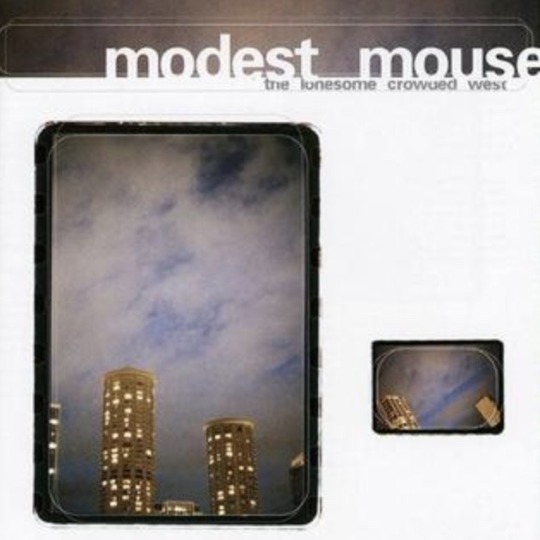
My positioning and concept for this project was oddly aligned with the themes and ideas found within the album "The Lonesome Crowded West" by Modest Mouse. The record is centred heavily on the idea of escaping the hustle and bustle of your city, hitting the road and driving until the grey paving becomes lush grasslands. While it may not be a direct artistic influence for Manipulated Image as a whole, It has served as a sort of influence for me. It's a record that is so deeply intertwined with it's geography, and is deeply critical of the paving and pillage of greed and capitalism, and the need to plant malls and housing onto fertile and beautiful soil. It's a theme that I similarly wish to explore, and it seemed that my recent infatuation with the record coincided with my project.
Generative A.I
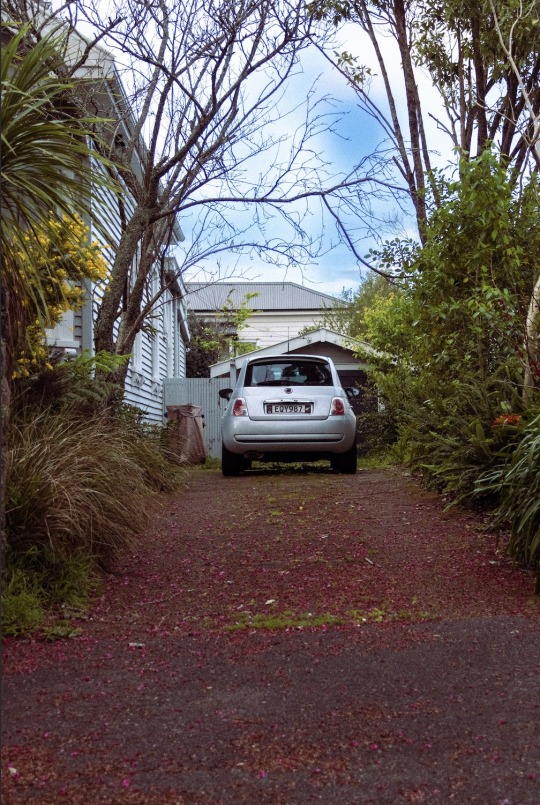
original image
I'm very opposed to AI, as I find it to be a gross and lifeless tool that sucks the life out of art and creativity. When giving it a try I insterted an image taken over the break and provided it with two prompts. The First being "Extend Image", which the AI didn't seem to understand - adding some strange borders and object into the side of the fram. I'm unsure of what the AI was trying to do, and how it managed to confuse such a simple request.
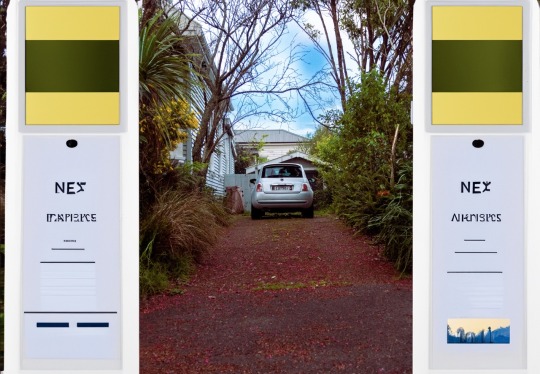
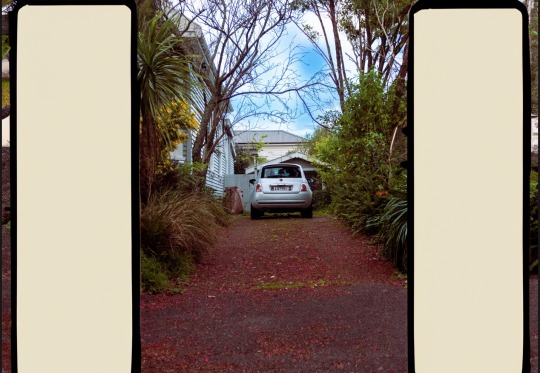
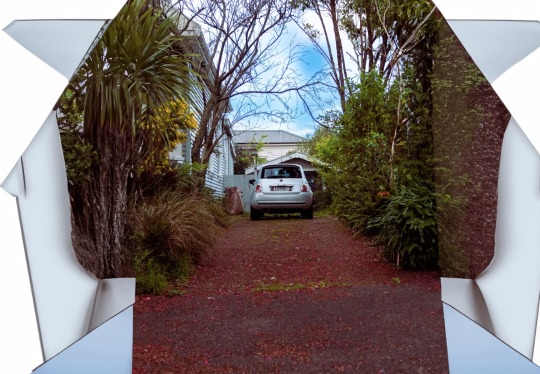
I tried again, this time adding the prompt "Make scene larger". It worked quite well, and is in fact quite shocking just how convincing it is. The scene feels so natural and realistic, if I were to post it online I don't think anyone would be able to pick up that this was digitally altered by AI (which is quite scary) The AI managed to pick up on a lot of context and environmental clues, translating the small object suburbly. The illusion is broken upon closer inspection, as the quality of the extention is sub-par.
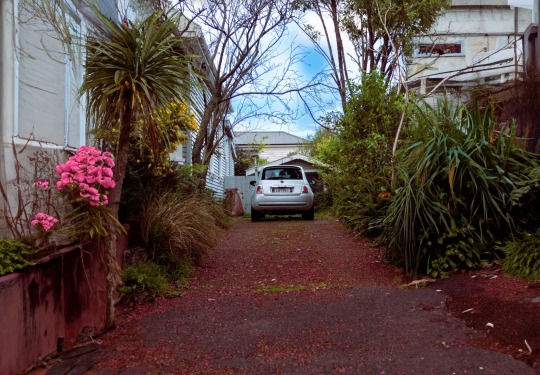
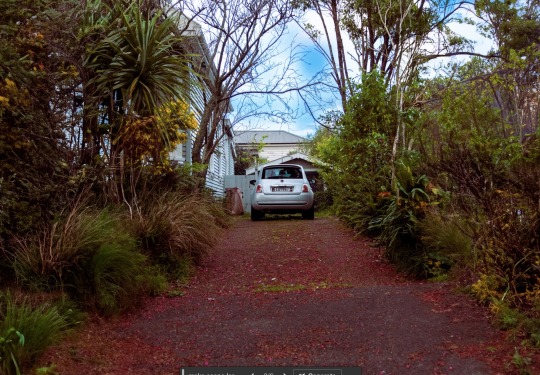
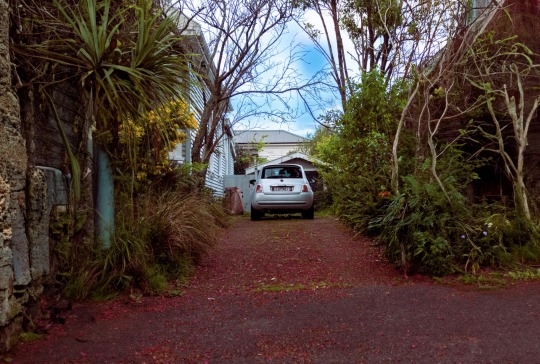
Roll of 36 - Week 08
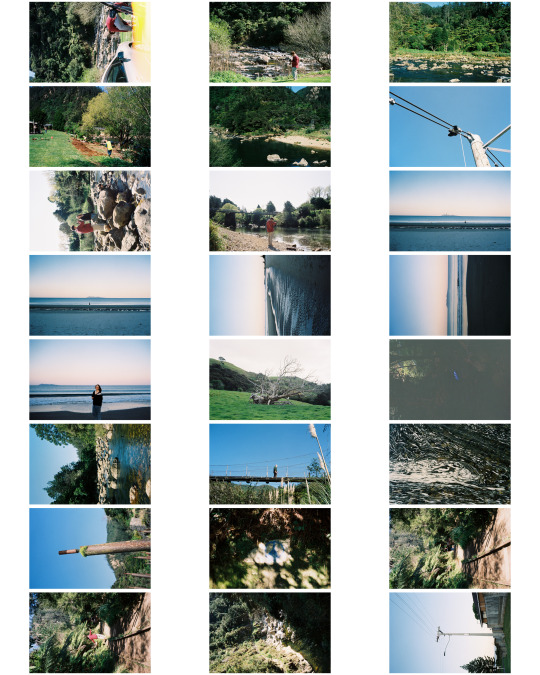
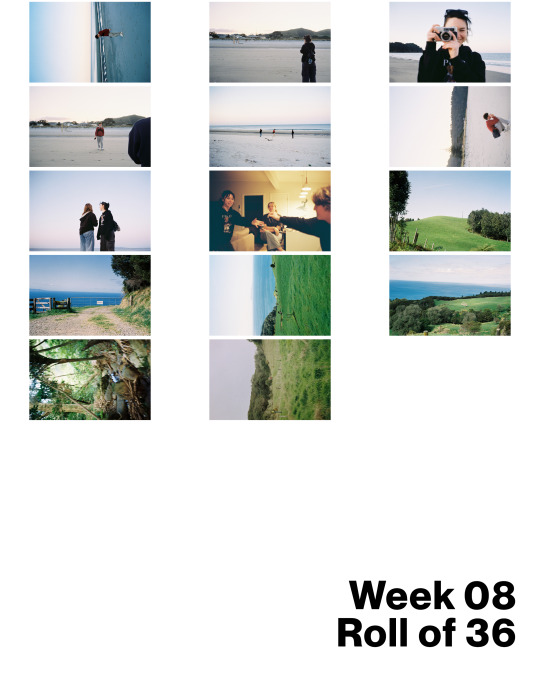
For this week, I have developed a roll of film shot over the break. I went on a trip to Waihi, and aimed to take a great deal of nature and landscape photographs. I really love the analogue feel of Film photography - It's something that I want to explore through my current project plan. I want to visually reject the normalcy of digital manipulation and digital processing, and lean to a more DIY look and feel. I plan to to shoot more landscape photos on film, and then contrast them with digitally shot city-scapes. I really love how vibrant the Kodak Colour film is. It's a great contrast to the sterile and cold feeling of cityscapes, which will be shot using my DSLR. While the images will end up being converted to monochrome colours, I still want to stay true to their vibrant nature by using the Riso printer.
Research and Influences
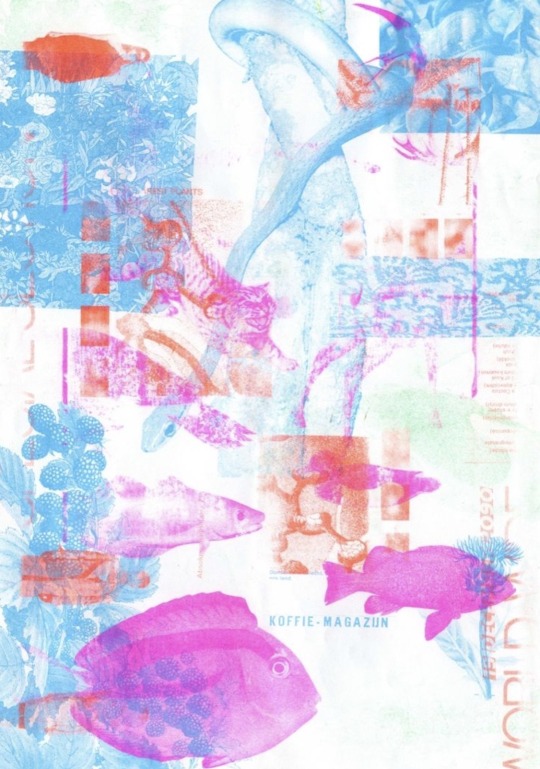

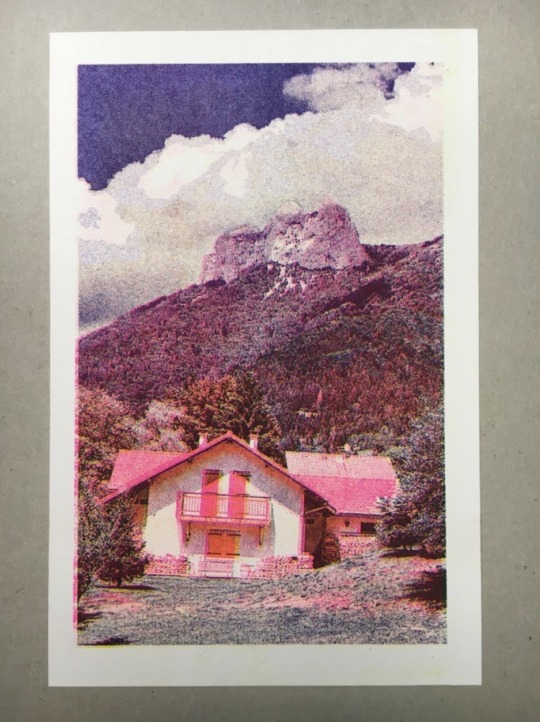
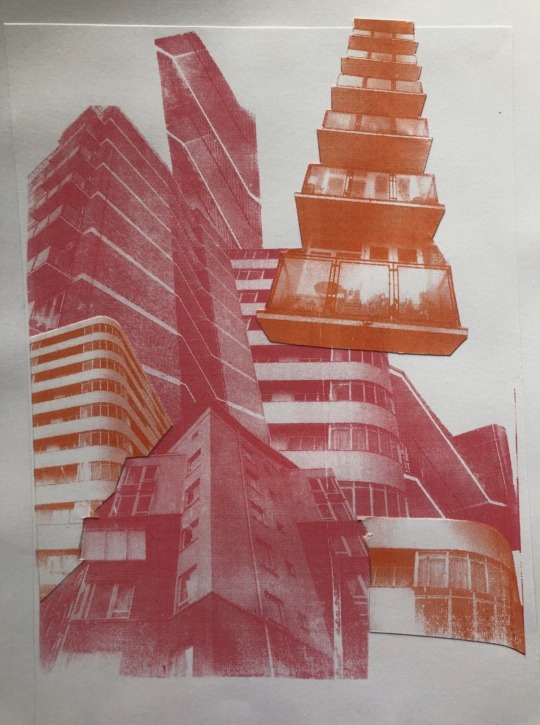
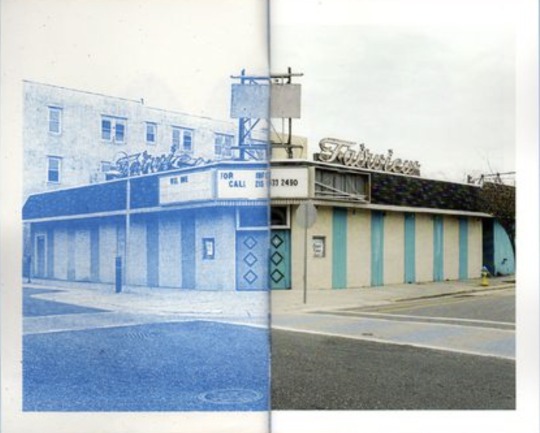
For this project I really want to understand the marriage of analogue and Digital processes, and how they can be married together. I really love the idea of using the Riso printer to depict city scapes in a more vibrant and colourful light, while still retaining a level of texture and grit that is provided by the grain and screen touched printing.
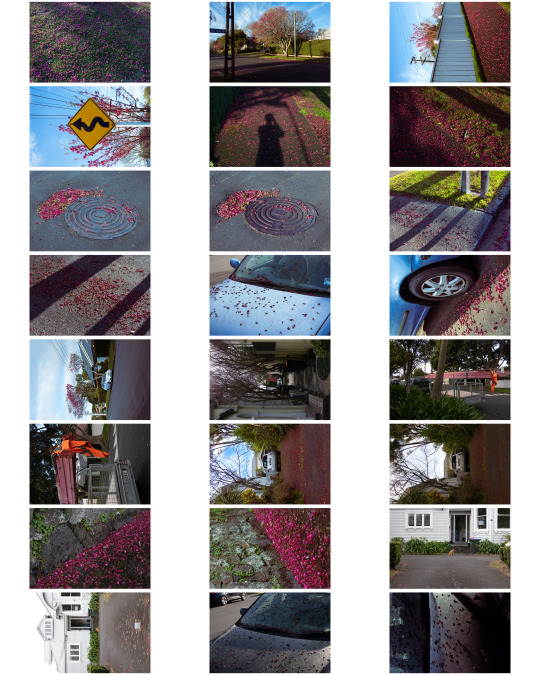
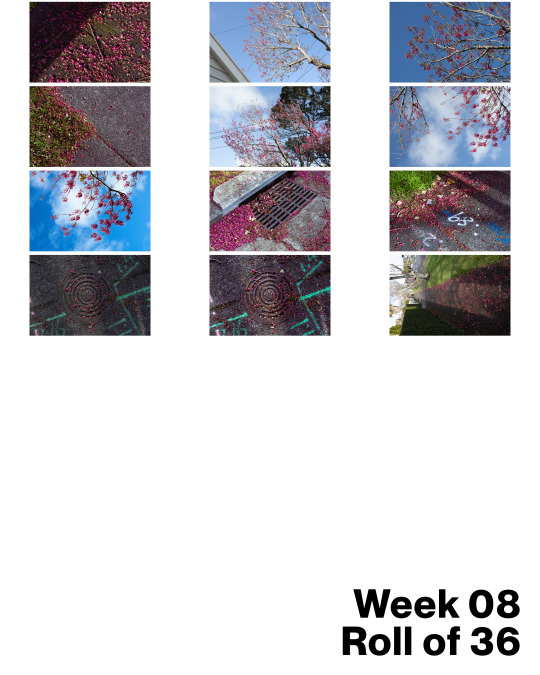
Artist Study - Jose Davila

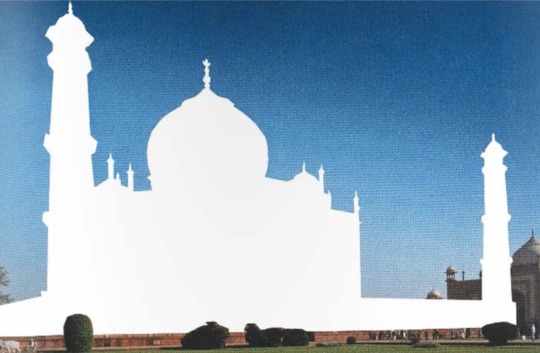

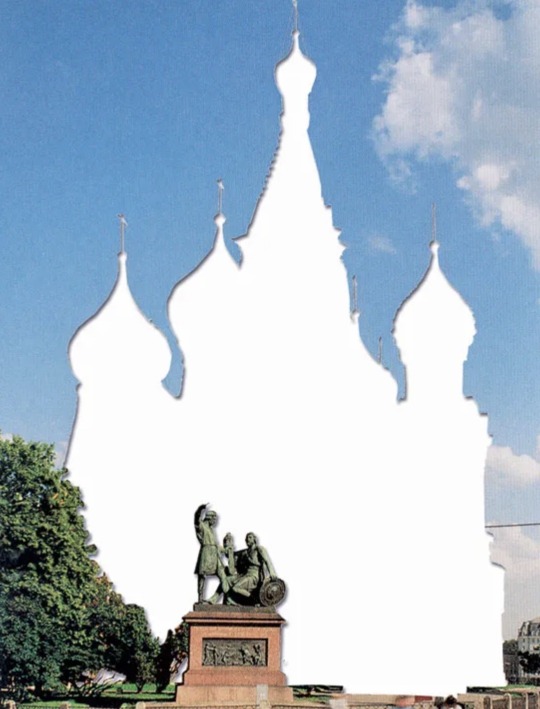
Multi-media artist Jose Davila uses striking methods of cutting out and removal in his Photographic series "There but not" in which he removes structures and buildings from images, cutting them out. This process is done manually, cutting them out of printed photographs and placing them on white paper. What results is an uncanny image, with I giant white spire or structure in place of a building. Jose often uses immediately recognisable and iconic structures for this series. He says that these works are meant to highlight "the importance of architecture". The series aims to reflect on the importance of what surrounds a building, and that they are forever tied to the context that it's placed within. This series is very striking, and I would love to try this for myself. Perhaps I could turn the concept on its head, and use blank spaces to imply that something is missing, or that something is intended to be in it's place (or destined to be) I also love that this series is done by hand, with these spaces being cut with scissors. You get these shadows being cast being the paper that adds an interesting layer of perspective warping, and also a great sense of oddity.,
0 notes
Text
How to Design a Website in 10 Simple Steps (Cost & Time)

A website’s success heavily depends on its design. A visually appealing website can attract users quickly. It entices them to explore your content and strengthens their connection with your brand. Many website owners consider hiring a professional web designer. Nevertheless, the cost of this choice may be high. Thankfully, it’s now simpler and less expensive to develop a fantastic website yourself thanks to website builders and design tools. They empower you to build a site that reflects your business effectively. This post will discuss how to create a website without any prior computer knowledge. Whether you want to create a digital portfolio or sell products online, we’ll go over the key web design principles, step-by-step directions to know when you need to hire the best website design company in India.
What You Need To Design a Website
You need to have a few things in order before you can begin developing your website. First, you’ll need a different hosting platform if the hosting included in your website builder is lacking. You’ll also require the website builder itself and a domain registrar. An SEO tool is also crucial for helping customers find your website.
What you need to plan, create, and manage a website is as follows:
Web hosting: In order for you to access your texts, photos, and databases over the internet, your website material needs to be stored in a physical location. This is what web hosting platforms do.
Domain Name: Your domain name will appear in the browser’s address bar when someone searches for you. Include your name to prevent misunderstanding; if it isn’t accessible, use a name that is similar. Before making a purchase, find out which hosting companies also act as domain registrars.
SSL Certificate for Secure Sockets Layer: Getting an SSL certificate is crucial to protecting user data, maintaining the security of your business, and preserving its reputation. Sensitive data is shielded from interception and manipulation by this encryption.
Search Engine Optimization Tool: To ensure that your content adheres to fundamental SEO practices and strategies and begins producing the intended results, utilize an SEO tool to develop an SEO strategy right away.
Point of Sale: You must integrate a POS solution into your website if you are selling goods or providing services that need to process and accept payments.
10 Steps to Creating a Website Design
Anyone who wants to construct a website must follow specific steps. You can adapt these steps to fit your needs or preferences. Establish the purpose of your website first. This will guide the entire process. Next, choose the right platform for building your site. Think of things like usefulness and ease of use. Give your website a well-defined architecture or framework.
Describe the Goal of the Site
You must first establish your goals in order to create a successful website. Consider the website’s purpose. Determine your target audience and design goals. Are you aiming for increased engagement, more sales, or higher download numbers? Perhaps you want more bookings, appointments, or just a larger audience.
It is imperative that you understand the desired website’s objective in great detail. Having this knowledge will assist you in selecting the appropriate platform, theme, and page architecture, as well as in implementing the best content strategy.
Select the Platform
Once you’ve defined your website’s purpose, explore the leading website builders. These tools are ideal even if you lack programming skills. They provide do-it-yourself (DIY) solutions for building a website independently. Various builders cater specifically to different needs, such as blogs, portfolios, and e-commerce.
In addition to offering editable templates for you to add your text and photos, many website builders also handle domain registration and hosting. However, you will have to create each webpage for the website yourself using the drag-and-drop interface. So, pick one that aligns with the goals of your website.
Compile the Components of Your Brand
The small details that make up your website, such fonts, colors, and photos, are called elements. As a result, when developing your website, consider the identity of your brand. Working with a primary color and one or two complementary colors, start with the color scheme. Next, pick a text style that complements your brand.
Serif, for instance, denotes formality and authority, while sans serif denotes modernism and innovation.In order to draw users in, include photographs as well. However, ensure that the images are high-quality and pertinent in order to leave a positive impression on consumers.
Choose a Theme or Template
Choose a theme or design for your website next. This will determine how buttons, text, and images are displayed. Themes are pre-made layouts that can assist you with website creation, even if you’re not experienced.
The majority of platforms include a variety of templates that are categorized and include built-in functionality particular to a given industry for each category. Select the one that is best appropriate for your website by previewing them.
If you decide to use WordPress to create your website, keep in mind that you will need to install WordPress and obtain web hosting from a third-party company like Bluehost or Hostinger. With that, you can import a demo content for premium themes, install a theme, and enter your WordPress admin panel.
Make a Site Map
To facilitate the design process, visualize the pages that will be on your site. Consider their connections to one another and how they will interact. For instance, knowing the total number of pages is crucial before you start developing each section. This understanding will provide a clear blueprint for your work. You’ll have a solid foundation if you already know what will be on each page.
Create Every Site Component
The next step is to start designing each part of your website, including the header, footer, search bar, and any other features you would want, using your template or theme and website map. Your website will be easy to explore and structured with the help of items like these.
Personalize Your Websites
You can modify your material to fit your needs, as it is based on the objective of your website. Nonetheless, the following pages must to be present on every website.
Homepage: This is where most visitors first land. It’s an ideal spot to offer an overview of your website. Make sure to provide a navigation menu that is easy to use. This will help readers move around your website without confusion. Include your logo and business name prominently. Let visitors know what they can expect from your website. Ensure that this page is neat and visually appealing.
Product or Service Page: This is where customers may learn what you have to offer and complete a transaction. Make a page for the catalog display on an e-commerce site and another for a detailed view of each item.
About Page: The “About” page is your introduction to potential customers. It shares your company story and beliefs. This page highlights your unique selling points.
Blog Page: To use blogging as a content marketing tactic, you need a dedicated blog page. This page will showcase excerpts from various blog posts. These posts will be ones that have already been published. After that, users can select the one that piques their attention.
Contact Page: Tell website visitors how they can contact you. Via social media, emails, or phone calls, it is possible. You can also add a contact form, a live chat widget, and your actual address.
Check and Publish Your Website
Test your website’s loading speed, readability of the content, mobile friendliness, linking, contact form, and any other component that may have an impact on user experience before it goes live. Get input from loved ones and coworkers regarding the layout of your website. Go ahead and launch your website if everything checks out.
Continue to update your website in accordance with its functionality, industry trends, and ongoing business operations.
Make Your Content More Effective
You should prepare to optimize your website for a seamless user experience when you’ve finished developing and publishing it. Here’s what you can do:
Mobile Responsiveness: The majority of website themes are now mobile responsive, meaning that your content will adjust to match various screen widths. Nevertheless, you might want to activate a mobile app just to be sure. You may test your website on iPhones and Android phones using browsers like Safari or even Google Chrome.
Internet Linking: By including internal links, you make yourself appear more knowledgeable about your sector to users and search engines. Since hyperlinks encourage users to stay on your website longer, use them to direct people to other relevant web pages.
Optimization of Media: Improve your media files to avoid poor ranking, increased bounce rates, fewer click-throughs, and longer load times. Make sure each page doesn’t include an excessive number of images or videos and that they aren’t overly huge.
Get The Best Website Design Company In India With Low Cost
Although designing can be challenging, creating your ideal website is actually quite simple if you use one of the many website builders that offer adjustable parts and templates. Deciding whether to work with a professional website designer or build a site yourself depends on several factors. First, consider your budget. A professional designer can be more expensive, but they bring expertise. If you have a limited budget, building the site yourself might be more feasible.
If you have the budget, hiring a professional web designer is a good idea. This is especially true for complex sites. If your site is intricate, a designer will ensure it looks great. However, if you like to build things and would prefer not to have to go back and forth when dealing with someone else, then you should use website builders.
Make Your Website Mobile Friendly
Given that half of all internet traffic originates from mobile devices, websites need to be optimized for mobile users. Ignoring this issue could lead to a significant loss of potential visitors. This frustration often leads to higher bounce rates.
You’re doing well if you use responsive web design. Here are some more ideas to improve the mobile friendliness of your website design:
For viewing on a smartphone or tablet, use a hamburger menu. By putting all of the links beneath a three-line button that is often located on the upper left corner of the page, this menu design conserves more screen real estate.
Make touch-friendly CTAs. The button should be big enough to press with your fingers. To avoid user errors, there should also be a good amount of space between buttons.
Make it scroll-friendly. Make use of functions like scroll-triggered effects, a back-to-top button, and a sticky navigation bar.
Best Website Design Company In India
Optimize Your Site For SEO
How can you make your website’s SEO better? By implementing these tips, you may enhance your website’s search engine optimization (SEO) and see it climb to the top of search engine results pages (SERPs).
Post Authoritative, Relevant Content
Experts believe this is the foundation of successful SEO. Excellent content is crucial and irreplaceable in SEO marketing. High-quality, reputable, and genuine material is the main factor that determines your search engine rankings. Develop your web writing abilities and show that you are an authority on the subject of your writing.
Consistently Update Your Content
It’s likely that you’ve noticed our strong opinions on content. And so do search engines. One of the finest measures of a website’s relevancy is its regularly updated material, so make sure to maintain it up to date. Keep your information updated for your audience, add to and modify it as needed, and include new sources when necessary.
Your departmental news blog will rank higher in search results if you add more content that is rich in keyword phrases. Blog entries can contain even shorter updates on the specific topics you are looking for. When linking to similar CMS webpages and blog posts helps the reader get a better idea or more details about the subject, do so.
Have A Website Worth Linking To
An impartial, objective homepage with loads of content educating users on pertinent topics is likely to draw links from other websites, enhancing search engine optimization.
Your reputation and authority will rise if you include relevant links in the article. Replace “click here” links with the location’s name by handwriting it. “Click here” only provides the associated URL and has no search engine value; in contrast, “Michigan Tech Enterprise Program” is packed with keywords and will raise both your and the linked page’s search engine rankings. Always employ keyword-based descriptive links to enhance search engine optimization and provide valuable content for your viewers.
Research Keywords And Make Use Of Pertinent Terminology.
In SEO, keywords are very crucial. When someone searches online for a topic of interest, they can locate your article thanks to a keyword, which highlights the primary subject of the piece. In essence, a keyword is what users will enter into a search engine. For this reason, you should confirm that your keyword matches the target audience’s search intent. It might be a long-tail term like “how to create a good digital advertising campaign” or a short keyword like “digital marketing.”
Put Keywords All Around The Page
Different relevant keywords are used for each blog post or website. “SEO for Beginners” is the keyword for this post. Most likely, a search for that term led you here!
The optimum location for your chosen keywords should be in the:
Post title
The Web address
The post’s opening and closing paragraphs
Naturally occurring throughout the post’s text
The image tags that were applied
Include them as long as they don’t interfere with the flow! Be cautious of “Keyword Stuffing,” which we discuss in greater depth in this essay.
Invest In Technical SEO And Mobile Optimization
Ensure that your website is responsive. This means it should perform well on various devices. Using resources like Google’s Lighthouse testing tool, you may assess how mobile-friendly your website is.
Utilize a capable web development team to put best practices for technical SEO into action. This entails providing a user experience that is rapid, seamless, efficient, and easy to use. Picture compression, browser caching, and fewer HTTP queries are recommended. Make sure the URL structure is simple to understand and navigate. This clarity benefits both search engines and users. A well-organized URL structure improves navigation and user experience.
Make SEO-Friendly Permalinks
A permalink is the URL that shows up when you explore a webpage. Permalinks tell a lot about how your website is organized overall; they should be brief but yet give a good description of the page’s content. For the web crawling bot and the reader alike.
As mentioned before, search engine bots examine each page on your website to appropriately index and understand each page’s information. Verify the meaning of the words in your URL. If you own an online bookstore, for instance, organize your pages using permalinks to assist customers understand what they are viewing and to help put the material in context. It facilitates easy searching of the hierarchy.
FAQ
What is the simplest approach to website design?
Using website builders can simplify your web creation process. Platforms like Squarespace and GoDaddy are user-friendly. They are perfect for beginners. With these tools, you avoid starting from scratch. These builders provide templates and easy-to-use interfaces.
Which software works best for designing websites?
Since Squarespace and GoDaddy are all-in-one systems that offer web hosting, domain registration, and built-in editors to users, they are the finest for web design. Nevertheless, depending on your unique requirements, you can look into other service providers.
Can I get a website designed for free?
Indeed, you may create a website for free using one of the website builders available. Please check their terms of service for additional information on posting and updating your website pages.
Is a website truly necessary for businesses?
Indeed, a website is crucial for any business. It plays a key role in marketing. Even if you’re not selling products online, having a website is important. It allows people to find out more about your business. This can lead to increased offline sales when you connect with the best website design company in india.
What is the greatest software for designing websites?
The finest website design software is the one that makes it easy and affordable for you to build the website you want. Still, the top picks include Sublime Text, WordPress, Adobe Dreamweaver, and openElement.
Conclusion
Thanks to technological improvements, web designers and SEO specialists have more alternatives than ever to make sure the site’s design is optimized for search engines. Create your website with the user in mind, and you’ll rank higher and draw in more traffic.
0 notes
Text
Week 7
I could not attend class, so I reviewed the class content at home. A few videos were provided discussing the upcoming age of AI and what it means for photography. I found this interesting because it compared the use of AI to the transition from film photography to digital photography. If this were the case and people created their own images through AI, this would make the skill of photography almost useless.
Next were some videos that discussed the process of planning a photoshoot. Some key points I picked up were:
flesh out your theme
find a location
build a network of team members
borrow/rent/buy and gear or props needed
sort out the people who will be receiving the photographs and how they want them shared with them.
Then we received a (brief?) for our next assignment: to create 3 cohesive manipulated images. I looked into Karen Jerzyk's work as she creates a whole series of astronaut images that are so different, but go together by having an astronaut element in all of them. I liked how she creates her overall theme of 'loneliness' in all of these images by placing an astronaut (who already doesn't fit in in any of these settings) in an empty room.

Concept/Context/Theme for my next assignment
I am heavily inspired by Natalia Seth's work:
https://www.instagram.com/escapingyouth/
I want to use one of her images as inspiration so have found a few that I could potentially go off of:
instagram
I could get different hair pieces and objects that it reminds me of the imitate this kind of image.
instagram
I like the idea of this one and maybe getting different things that create bubbles to put someone inside of.
instagram
I love how she's captioned this one: 'eating with your eyes' and I would love to recreate something like this.
instagram
I also love this idea and tying it together with the lollipop and eyeball ideas to make the model of my image feel overwhelmed by objects that could represent a negative/positive aspect of their life.
instagram
This concept interests me because I could do a 3 image series with 3 different books and create a 'world' around the model holding the book. This could also be a nice turning point from my image from assignment 1.
Planning my Photoshoot
So I think I have decided that my concept for my next assignment will go with the theme of 'storytelling'. I think I want to create 3 different reading situations (cozy chair / in bed before sleep / at work on a lunch break) and then create an entire 'world' of sorts around them.
In terms of models, I want to use 3 different people since each image will be connected by the book and storytelling aspect. I just need to find 3 people.
Mum
Jack
Me
In terms of locations I think I will use these (respective of the list above:)
Her workplace (kindy or office)
His room
My cozy reading chair
For props, I will obviously need a book. But I do want to create 3 different story scenarios so I think I will do:
Fantasy
Sci-Fi
Historical Romance
In terms of props for those scenarios:
Fantasy
stars
mythical creature
crown
tree
castle

Sci-Fi
glowing creatures/blobs
robot
ufo

Historical Romance
fancy dress
wine
candles

I need to get this photoshoot done before the end of the semester break.
Update
I've been mulling my idea over a couple of days and think I have finalised my concept and theme:

This will be my plan going forward, I plan on taking my base photographs by the end of break and then working on prop photos once we go back to uni :)
0 notes
Text
Face Anti-Spoofing Datasets in Biometric Security
As facial recognition technology continues to evolve and integrate into various facets of our digital lives, it faces persistent challenges from sophisticated spoofing attacks. These attacks aim to deceive biometric systems using fake facial data, ranging from simple photographs to advanced deep fakes. To counteract these threats, the development and utilization of robust face anti-spoofing datasets are crucial. In this blog, we will explore the role of these datasets in strengthening biometric security, their current state, and the future directions for enhancing face anti-spoofing technologies.
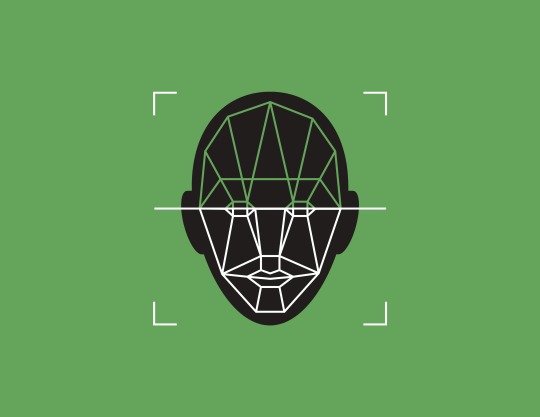
Understanding Face Spoofing Attacks
Face spoofing, or presentation attacks, involves presenting fake facial representations to bypass biometric systems. Common methods include:
Static 2D Attacks: Using photos or printed images of faces to trick systems.
Static 3D Attacks: Employing 3D-printed masks or models to mimic a person’s face.
Dynamic Attacks: Leveraging videos or deepfakes to simulate real-time facial movements.
As these methods become increasingly sophisticated, they pose a significant risk to the integrity of facial recognition systems.
The Role of Anti-Spoofing Datasets
Anti-spoofing datasets are crucial in developing and training systems to detect and mitigate spoofing attempts. These datasets typically include a diverse range of facial images and videos, encompassing both genuine and spoofed samples. The effectiveness of anti-spoofing technologies heavily relies on the quality and variety of these datasets. Here’s why they matter:
Diversity and Representation: A well-rounded dataset must represent various demographic groups, lighting conditions, and spoofing techniques to ensure that anti-spoofing systems perform reliably across different scenarios.
Training Robust Models: Machine learning models used for detecting spoofing attempts are trained on these datasets. The more comprehensive the dataset, the better the model can generalize and accurately identify spoofing attempts.
Benchmarking and Evaluation: Datasets provide a standard for evaluating the performance of anti-spoofing technologies. They help in benchmarking different systems and identifying areas for improvement.
Key Face Anti-Spoofing Datasets
Several datasets have been established to support the development of anti-spoofing technologies. Notable examples include:
CASIA-FASD: Developed by the Chinese Academy of Sciences, this dataset includes a wide range of face images captured under various conditions, providing a solid foundation for training anti-spoofing models.
REPLAY-ATTACK: This dataset features videos of subjects presenting both genuine and spoofed faces, collected under different lighting conditions and using various spoofing techniques.
MSU Mobile Face Spoofing: Designed for mobile device applications, this dataset includes both still images and videos of spoofing attacks, tailored to scenarios involving mobile biometric systems.
FaceForensics++: Focused on deepfake detection, this dataset provides a large collection of manipulated video footage, offering valuable resources for training models to identify and counteract deepfake attacks.
Characteristics of Good Training Dataset
1. Diversity and Representativeness: Wide range of facial variations, demographics, ethnicities, age groups, genders, skin tones, and facial expressions to avoid bias and improve generalization.
2. Quality and Consistency: High-quality images with consistent resolutions, clear facial features, and minimal noise, ensuring the model learns relevant features without being influenced by noise or variations.
3. Balanced and Adequate Volume: Well-balanced dataset with sufficient samples for each class or category, ensuring the model receives adequate exposure to all facial variations and avoiding biased models.
4. Annotation and Labeling: Accurate and detailed annotations of facial attributes, including key facial landmarks, expressions, gestures, and emotions, enabling the model to learn distinct facial features and variations.
5. Ethical and Privacy Compliance: Compliance with ethical guidelines and privacy regulations, respecting individuals' privacy rights, obtaining necessary consent, and ensuring anonymization of personal information.
6. Realistic and Varied Scenarios: Datasets reflecting real-world scenarios, including different environments, camera angles, occlusions, and facial occlusions, enhancing the model's adaptability to various conditions and scenarios.
7. Preprocessing and Standardization: Preprocessing techniques ensure uniformity and consistency in the dataset, optimizing data for effective model training, and reducing noise and irrelevant variations.
8. Adaptability and Generalization: The dataset allows the model to adapt and generalize well to unseen or new facial variations, performing better in real-world applications and diverse user groups.
9. Continuous Updates and Maintenance: Regular updates and maintenance of the dataset, keeping the model current with evolving facial characteristics, trends, and technology changes.
Current Challenges and Future Directions
Despite the advancements in face anti-spoofing datasets, several challenges remain:
Evolving Spoofing Techniques: As spoofing methods become more sophisticated, datasets must be continuously updated to include new types of attacks and countermeasures.
Quality vs. Quantity: Balancing the quality and diversity of dataset samples is crucial. While larger datasets can provide more coverage, they must also maintain high standards of data quality.
Real-World Application: Ensuring that datasets reflect real-world scenarios is essential for developing practical anti-spoofing solutions. This includes considering variations in lighting, camera angles, and user behavior.
Conclusion
Face anti-spoofing datasets play a pivotal role in enhancing the security and reliability of facial recognition systems. By providing a foundation for training and evaluating anti-spoofing technologies, these datasets help in developing robust solutions to combat evolving spoofing techniques. As the field progresses, ongoing efforts to improve and expand these datasets will be essential in staying ahead of fraudulent activities and ensuring the integrity of biometric security systems. At TagX, we're committed to supporting the advancement of biometric security through our innovative data solutions. Stay tuned to our blog for more insights into biometric security and the latest advancements in anti-spoofing technologies, and discover how TagX can help you unlock the full potential of your facial recognition systems.
Visit Us, https://www.tagxdata.com/
Original Source, https://www.tagxdata.com/face-anti-spoofing-datasets-in-biometric-security
0 notes
Text
Week 2 SDL
The article "Photography for the People" provides a thorough exploration of how photography has evolved from its inception as a tool for recording reality to a medium often associated with manipulation and subjective interpretation. Beginning with the democratization of photography through the Kodak No. 1 camera, the article highlights how the accessibility of photographic technology paved the way for iconic instances of photo manipulation, such as the Cottingley Fairies hoax. These images, later revealed as fakes, underscore how photographs, despite their perceived authenticity, can be used to deceive.
One key claim of the article is that photography, traditionally seen as a truthful medium, has often been manipulated to convey specific narratives. The examples of staged photographs during significant historical moments, such as "Raising the Flag on Iwo Jima," challenge the assumption that photographs capture unfiltered reality. Instead, they reveal the photographer's power to shape perceptions by selecting what to include in the frame and how to present it. This idea resonates with contemporary concerns about the authenticity of images in the digital age, where photo-editing software like Photoshop has further blurred the lines between truth and fiction.
I agree with the article's assertion that photography, even in its earliest forms, has been subject to manipulation. This aligns with my experience of encountering digitally altered images on social media, where reality is often distorted to fit personal or commercial agendas. For example, I once came across a photograph on Instagram that appeared to show a perfect sunset over a beach, but later learned that the colors had been heavily edited to create a more dramatic effect. This experience made me more aware of the potential for deception in photography and the importance of questioning the authenticity of images before accepting them as truth.
In conclusion, the article emphasizes the need to critically engage with photographs, recognizing them as products of both the photographer's intentions and the viewer's interpretations. This reflection challenges the notion of photography as an objective record of reality, urging us to consider the broader context in which images are created and consumed. The evolution of photography from a tool of documentation to one of manipulation highlights the complex relationship between images and truth, a theme that remains highly relevant in our visually saturated world.
0 notes
Text
Photographer reaserch
Elizaveta Porodina
Elizaveta Porodina is a Russian-born photographer now based in Munich. For me, what sets her apart is not just her artistic vision. Porodina employs color in a very bold and almost overwhelming manner, creating visuals that intriduce a sense of excess and intensity. By weaving between the realms of photography and fine art, she crafts dreamlike scenes that blur the boundaries between imagination and reality.

I believe this image is composed of at least 10 photos taken in the same environment under consistent lighting conditions. The paper effects could have been created either physically or digitally in Photoshop. Elizaveta chose to use black and white for this image, which gives it a more neutral vibe. Color often suggests specific emotions, and I think she is trying to avoid that. It seems that Elizaveta is attempting to convey a complex emotion, one that is difficult to express in a single word.

This image, unlike the previous one, is very colorful and saturated. A unique aspect of this photo is that it looks like an underwater shot—though it is hard to tell if it was actually taken underwater or if it was heavily manipulated, which seems more likely. The subject's hair and the strings around her appear to be floating, and bubbles can be observed around her. At first look, the subject in the photo looks calm despite being in the water. However, upon closer inspection, her eyes are not in focus. It is interesting to see two opposite atmospheres presented in one image: calmness and a sense of being lost. The colors are vibrant and overwhelming, but the scene evokes a different feeling.

It is difficult to tell if this is a photo or a drawing. This image might have undergone multiple layers of texturing until it achieved this watercolor painting-like looking. The tear drops could be real or edited. I tend to believe that the tear drops were present on the model during the actual shoot, but I suspect she used something other than water to represent tears; maybe something less fluid or even solid that could be sticked to the model's face. This would make the photo shoot easier since water can ruin the makeup. The lighter in the image symbolizes revelation, uncovering something from the darkness—something sad or a negative emotion that we might not realise exists until it is revealed.
0 notes